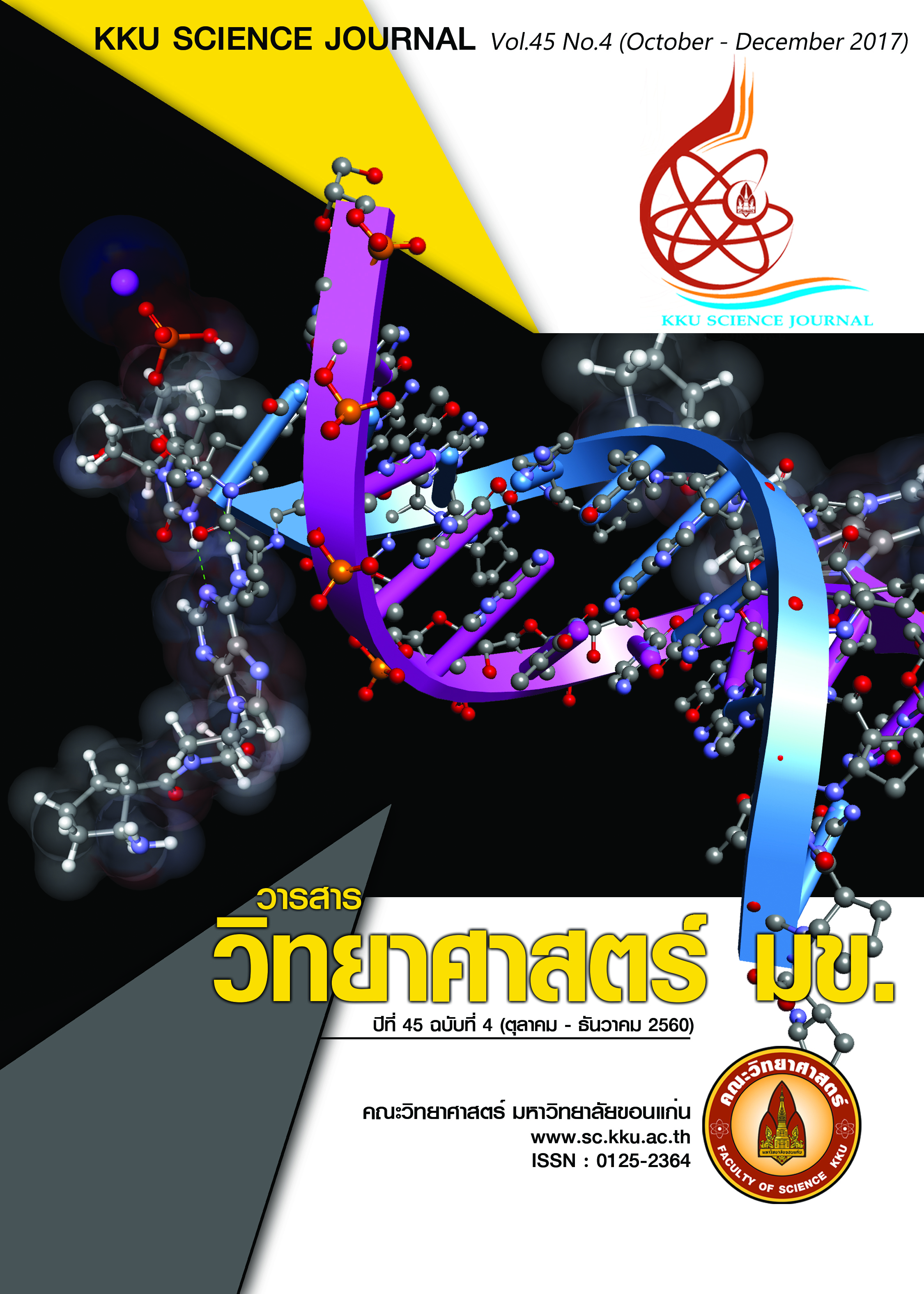Property of Watson-Crick Base Pairs in Pyrrolidinyl PNA Binding to DNA and RNA: a Density Functional Theory Study
Main Article Content
Abstract
The property of Watson-Crick base pairs in pyrrolidinyl peptide nucleic acids (PNAs) binding to DNA and RNA were studied using density functional theory calculation. The studied PNA backbones were (2'R,4'R)-prolyl-(1S,2S)-2-aminocyclobutane carboxylic acid (acbcPNA), (2'R,4'R)-prolyl-(1S,2S)-2-aminocyclopentane carboxylic acid (acpcPNA) and (2'R,4'S)-prolyl-(1S,2S)-2-aminocyclopentane carboxylic acid (epi-acpcPNA). The results revealed that the optimized base pair geometries of all system were insignificantly different, implying that the nucleic acid backbones did not affect the hydrogen bond geometry of base pairs. However, the backbones affected the hydrogen bond strength. The interaction between acbcPNA and DNA/RNA was higher than those of other PNAs. The effect of solvent on binding ability of base pairs was also studied and the result revealed that the interaction of base pairs was reduced by about 2 times compared to the gas phase interaction. This information may lead to the understanding of PNA-DNA or PNA-RNA duplex stability.
Article Details

This work is licensed under a Creative Commons Attribution-NonCommercial-NoDerivatives 4.0 International License.


